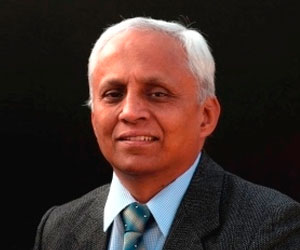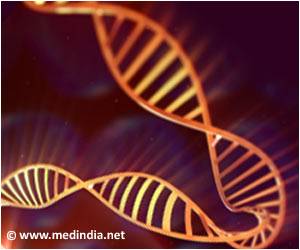- World Parkinson’s Day is observed on April 11th 2017 and this year marks 200 years since Parkinson’s was recognised as a health condition.
- #UniteForParkinsons is the theme for this year’s World Parkinson’s Day, a resolve to increase awareness about the disease
- Dr. B.Gangadhar, Director, NIMHANS, talks about the disease, the symptoms and ways to manage it in his exclusive interview with Medindia
Symptoms of Parkinson’s
The symptoms of this condition include:- Stiffness in the legs, arms and trunk
- Slow movement
- Trembling or vigorous shaking of hands, arms, jaw, face and legs
- Lack of balance and coordination
Diagnosis
Currently there are no laboratory tests that are available to diagnose Parkinson’s disease. Doctors use a neurological examination and medical history to establish the condition.Age of Onset
Parkinson’s disease is found to begin when the individual is around 60 years of age, but there are instances when there is early onset of the condition. Currently, there is no known cure for the condition and treatment helps in managing the condition, and delaying progression. Deep brain stimulation involves the use of surgically implanted electrodes that produce electrical impulses which result in the stimulation of parts of the brain that are associated with movement.Significance of Celebrating World Parkinson’s Disease Day
April 11th is the birth anniversay of Dr. J Parkinson, who was the first one to describe the disease in “An Essay on the Shaking Palsy” in 1817. Dr. Parkinson detailed a condition which had lowered muscle power, a tremulous motion that was involuntary and which could not be controlled even if it was supported. The patients had an increased inclination to bend their body forward, switching from walking to running involuntarily with deteriorating intellectual ability.Symbol of Parkinson’s Disease - Red Tulip
The red tulip is one of the most well-known symbols of Parkinson’s disease and it was associated with the day during the Luxembourg Conference, marking the 9th World Parkinson’s Day. J.W.S Van der Wereld, a Dutch Horticulturalist who suffered from this condition grew the red and white tulip and named it after Dr. Parkinson.Exercising for 2.5 hours Slows Parkinson’s Progression
Parkinson’s disease is associated with a difficulty to walk and stiffness, with constant tremors. A new study published in the Journal of Parkinson’s Disease details a research study conducted on 3,400 patients in North America, Israel and Netherlands. The characteristics of the patients that were studied included- Time taken to get up from a chair
- Time taken to walk about 10 feet
- Time taken to sit back down on the chair
As a part of World Parkinson’s Day 2017, Medindia conducted an exclusive interview with Dr. B.N.Gangadhar, Director, The National Institute of Mental Health and Neurosciences (NIMHANS), on his pioneering groundbreaking research on Parkinson’s. Dr.Gangadhar has more than 30 years of extensive experience in the area of mental health, which includes clinical as well as academic perspectives.

- He won the Sir CV Raman Award as well as the Doctors Day Award
- He was a consultant for WHO for Tsunami relief projects.
- He is a part of the expert panel for Department of Science and Technology (DST)
- He is a part of The National AYUSH Committee for Integrative Medicine
- His interests include Electroconvulsive Therapy (ECT), Public Health and Yoga, Community Psychiatry and Mental health.
- He has authored more than 300 research publications
Medindia: What are the treatment methods that are currently available?
Dr. B.N.Gangadhar: The treatment methods depend on the severity of the disease, whether it is in its early stage or in the late stage. Initially, the patient is given medications to help cope with the condition, it increases the amount of dopamine in the brain. There are surgical interventions that can be used to treat the condition in severe cases.
Medindia: People with Parkinson’s most often suffer from depression that needs immediate attention. This is due to their “Western Nations get Parkinson’s” perception, your comments?
Dr. B.N.Gangadhar: That is not true, there are many patients in India, with a growing trend in the recent years.
Medindia: Can Parkinson’s affect people in their 30s?
Dr. B.N.Gangadhar: Some people get Parkinson’s syndrome, with many similar characteristics and traits. These may be caused due to different level of dopamine, medications used, encephalitis, lack of sufficient blood supply to the brain and various types of intoxicants. This type of Parkinson’s syndrome may occur early, but it is not known if everyone with Parkinson’s syndrome will develop Parkinson’s disease later n in life.
Medindia: How can the disease progression be prevented?
Dr. B.N.Gangadhar: Through the use of medicines and physical activities.
Medindia: What is thecurrentresearch onParkinson’s?
Dr. B.N.Gangadhar: There is a lot of research on Parkinson’s. India has pioneered a lot of research. Dr. Verma from NIMHANS developed a chemothalamectomy injection for Parkinson’s, which involved injecting medicine into the brain. This was way back in the 1960s and there was considerable relief for the patients. Research continues to spearhead our initiative for Parkinson’s.
Medindia: Is there a cure in sight for people with Parkinson’s disease?
Dr. B.N.Gangadhar: There is no cure at the moment, it may take a while, but I am confident with the steps that are being taken that it will be developed.
Medindia: What is your advice for people on World Parkinson’s Day 2017?
Dr. B.N.Gangadhar: Lead an active life. Take your medicines regularly and visit your neurologist periodically. An active life has been shown to slow progression of the disease. Most people hesitate to do their daily chores once they are diagnosed with the condition, which makes it worse for physical health, as well as, for mental health. Try to be as independent as possible.
References:
- Parkinson’s Disease - (https://medlineplus.gov/parkinsonsdisease.html)
- Parkinson’s Awareness Week - (https://www.parkinsons.org.uk/content/parkinsons-awareness-week)
- WORLD REPORT ON DISABILITY - (http://www.who.int/disabilities/world_report/2011/report.pdf)
Source-Medindia











